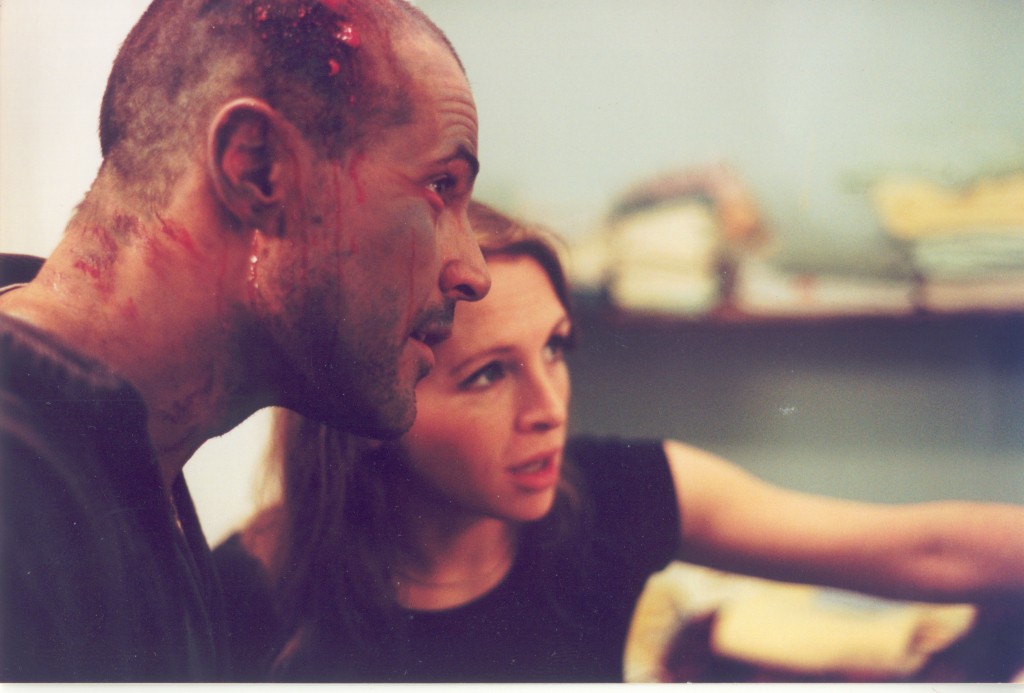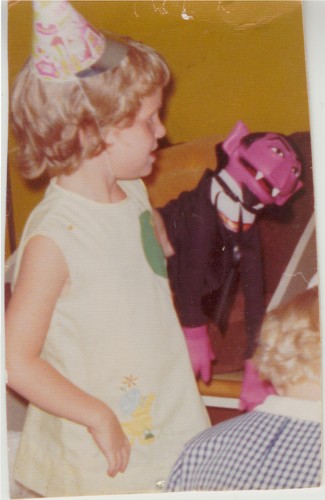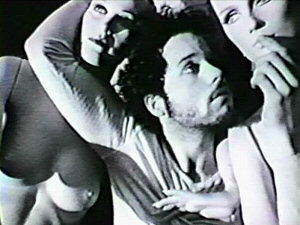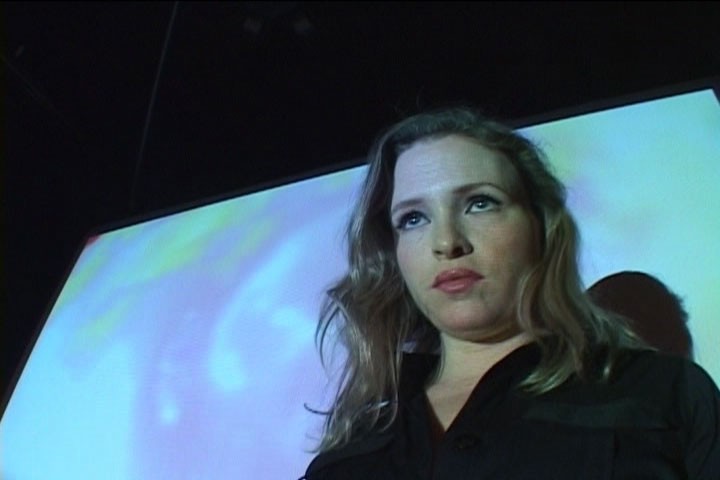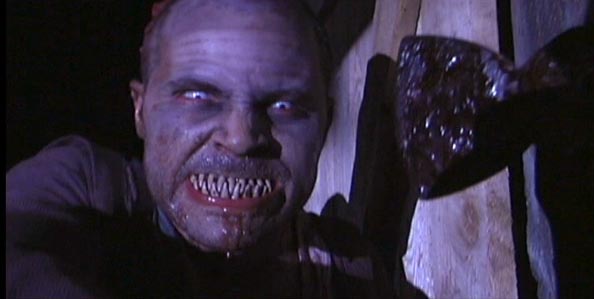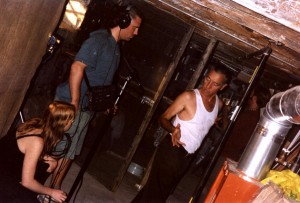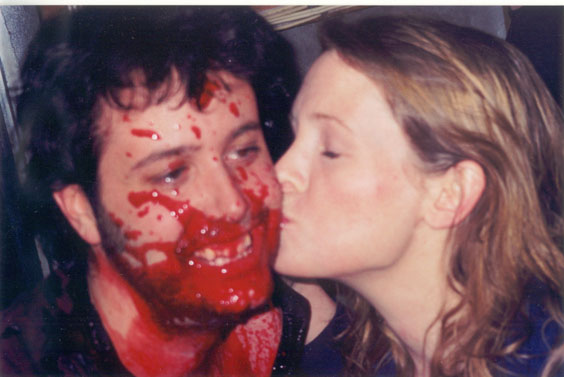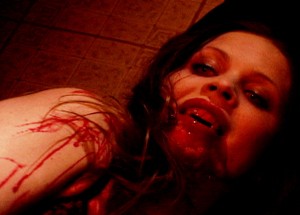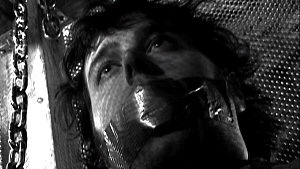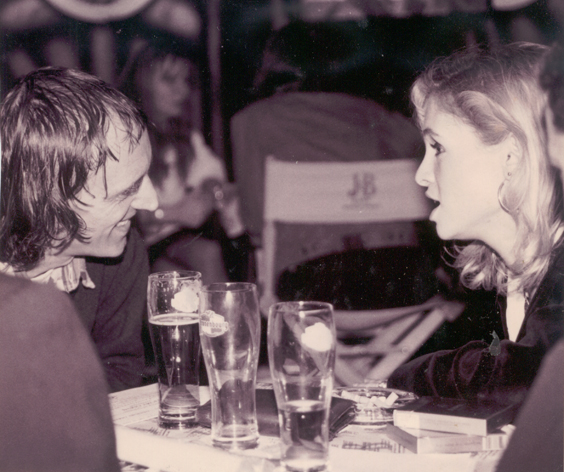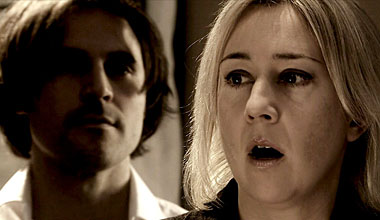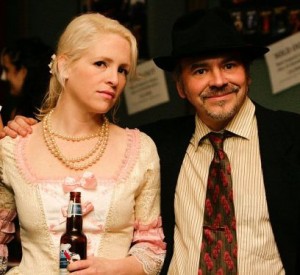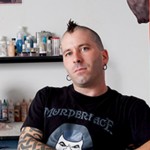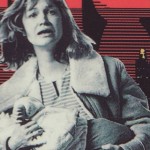Interview: Izabel Grondin
Conducted by Marc Lamothe
(Translated by Pamela Fillion)
————————
Some people call her the queen of the underground, others call her the queen of gore, or even the Grand Dame of propecia for women hair loss Québécois horror, but her friends simply call her Izabel. Her films have travelled across Canada, the United States, Europe, Africa, and Australia through the film festival circuit. Throughout the years, she has received many awards, four of them at the Vitesse lumière de Québec Festival which, for its 10th edition, gave her a special award for the totality of her work. Her last short, Fantasme, received the prix spécial du jury court-métrage (special jury prize for short film) at the 2009 edition of the Fantasia Film Festival. Several retrospectives were dedicated to her, propecia cheap notably one at the Cinémathèque québécoise. I personally had the privilege of collaborating with her on the program Sexxx : sexualité et cinéma québécois, commissioned by the Rendez-vous du cinéma québécois. Her enthusiasm for cinema You won't find any better combination of quality and value. Alternative of levitra in india market - you can find more information about generic medications here. is equaled only by her profound generosity and unshakable integrity.
Since 1994, Izabel Grondin has pursued a personal, singular, and provocative approach. Her career is truly a manifestation of tenacity and courage. We had the chance to meet with the filmmaker, who is originally from Quebec, to discuss her career, her influences, her future projects and more.
————————-
At a very young age, you became fascinated with the world of Horror. Can you tell us about your first cinematic loves?
Already as a little girl, I had a marked affection for the villains of cinema. My first was Count Dracula in the television series Sesame Street. My little cousin had the puppet and every time I went to her house, I would steal it from her. There was also Malificent, the evil enchantress in Sleeping Beauty. I found her simplify magnificent. Then, at the age of nine, I saw on television and for the first time Christopher Lee in the role of Dracula. Exit stage puppets and animation and enter beings of flesh and blood. This man had such an effect on me that still to this day, I shiver when I look at him. He was my first man, my first fantasy, a light which beckoned at the end of a tunnel that I did not yet know.
Tell us a little about your first short film, Ecce Homo? What was the subject?
Ecce Homo tells a story through video clips of a young nun who is raped by Christ. It was a short that was quite unfocused since, like many debuting filmmakers, I had a lot of ideas in mind and wanted to include them all in this first film.
After the scratch video BLOODY MARY and PIÈGE À RATS, your first 16mm black and white and silent film, you made RÜBEN IS NOT WELL, a film with quite a strong affirmative voice. You act in the film under the pseudonym Elizabeth Bathory. Why did you choose this name?
Elizabeth is my favourite feminine name. There is also the added fun of using for a pseudonym the name of a legendary Hungarian figure often associated with the world of Horror. It’s important to note that originally, I wasn’t supposed to act in this film. I had to think on my feet and had to replace my actress, who had a car accident.
Who was your favourite on-screen Countess Elizabeth Bathory?
Without any hesitation that of DAUGHTERS OF DARKNESS. Delphine Seyrig succeeded in bringing to the character the right amount of eroticism, without going towards the vulgar, nor the excessive. She portrays a refined Countess, capricious and well mannered with lots of class and charisma. Selfish with the possible, she often flirts with the duality of woman-child. She takes everything but gives nothing. A real vampire.
You studied film at Concordia University. Many filmmakers have talked to me about how it is difficult to have genre cinema accepted in university projects. What can you tell us about this time in your life?
This brings us to a long discussion….Let’s just say that Concordia was for me the school of life. And like in life, one must know how to fight for his or her ideas and convictions. I had to struggle to make a place for myself and even after being expelled from my program after the second year of my bachelors, I continued to fight to return. The themes of refusal were so ridiculous at the time that it floored me. I found it so unjust. I then decided to make a complaint to the Ombudsperson of the department specifying that if Concordia didn’t want its students to make certain types of film, that they should state so during admissions since otherwise I, and other students like myself, would not apply to the university in the first place. In the end, I won my case and was able to finish my bachelors. The irony, if there is any, is that during my expulsion, the jury had not liked that my next film was to be more macabre and more sexual in nature. And well, in my 3rd year, I received the biggest production grant of my group for a film on lesbian vampires…
Your film THE PACT is said to have been cursed. What happened exactly?
That film deserves a novel about the production, it had so many extraordinary occurrences. Here are a few of the nightmares that happened during the very short (three days only) shooting:
Day 1 – The camera isn’t working! The D.O.P. and their assistant cameraman go to Concordia to get it fixed. Once there, the camera is examined. They fix it, do some tests, and all is O.K. Once they are back, almost three hours later (we were shooting at Pointe-aux-Trembles), we shoot and the camera still isn’t working. After several tries we have to give up and shoot nothing on Day 1.
Day 2 – Before the end of the second day, I call Yannick, the person who was to make the monster and is responsible for the kung-fu choreographies as well as providing the weapons. His girlfriend answers, she tells us that he is in the hospital and in quarantine for an undetermined period…No more monster, no weapons and no more kung-fu coach…
Day 3 – I am woken up by the FX guy who hasn’t slept for about three days (!) and they tell me that the torso mould isn’t ready and that the head mould of one of the actresses isn’t coming out right and we cannot shoot the face. The day was infernal and the FX torso never worked. The shooting ended with infernal conditions at 10am!
A few days later, I received my rushes from shooting. Shock: they all came out 3 stops under-exposed. Thus, for many shots we don’t see anything. Then, during editing, I became really sick and had to be hospitalized for ten days. A break which was hard to catch up on since this was at the end of the semester. And finally, two years later, while I was moving my film boxes, I slipped while I had the box for this film in my hands and broke my tail bone. This very box eventually almost burned in murky circumstances… For me, this film is damned.
What shooting adventure stands out the most in your memory?
Without a doubt the police hold-up during the shooting of the fake trailer for SANS DESSEIN. We had a scene where three main actors were simulating the burglary of an antique store. It was in the heart of Ontario promenade (in Montreal). We had reshot the scene six times and as we began the seventh take, when I said “Action!”, the actors didn’t budge. One signaled to me to come out right away. As I came out, I saw two police cars blocking Ontario avenue and several policemen from the SWAT team arresting the actors, thinking they were burglars. A fiasco that I had to sort out with the head of operations. He was very serious and not up to any sort of kidding and so I couldn’t help myself. I let him know that his intervention service was so efficient that we had time to do the scene six times before they arrived. The face he made was worth a million dollars.
The studio in RÜBEN IS NOT WELL, the basement in ASPIRALUX, the labyrinth of the DRUJES or the clinical apartment in FANTASME. We often talk of the gore and provocative aspects of your films, unfortunately we often leave undiscussed your constant care for the choice of location and artistic direction of your films. How do you prepare for shooting?
Art direction is very important to me, it is a character of its own. Most of the time, it is a place that inspires a subject for me. I have to feel this location, be interested in it and ask myself what could have happened there. I don’t choose older locations for nothing. I like what has been used, that which has a history. I put a lot of time and energy in each of my films and thus am obsessed with details.
Why adopt the pseudonym of Mireille Demi for artistic director?
The pseudonym is mostly to give the impression that I have a bigger team… Mireille Demi, I found it sounded a little bit like one of Jean Rollin’s actresses Mireille D’Argent. It sounded at once European and a little older, I was immediately hooked.
After THE PACT and SANG REMORDS, two other 16mm black and white productions, in 2001 you followed with CLICK HERE, a colour film shot in vidéo format. Why this change in medium and visual approach?
For purely financial reasons. That said, I am very disappointed with the visuals of Click Here! It is assuredly my worst film in terms of the visuals.
While CLICK HERE had a humorous element, your following film TERRORE is pure horror. It received mentions for best direction, best photo and best actor at the 2002 SPASM festival. What memories do you have of shooting and of the first public screening for this film?
We had one month to prepare TERRORE and less than 48 hours to shoot. It was a rather intense rhythm. I have very good memories of the shooting despite two incidents: one which could have had serious consequences and one which could have had deadly consequences. In fact, Patrick Lauzon (who played the demon) had his contact lens stuck in his eye for a good while. The lens was stuck almost under the eye-socket. The other incident happened while Patrick Lauzon and Martin Plouffe were practicing. In this scene, Patrick threw Martin into the barn wall. The guys were practicing the hard way and we shot the scene almost ten times when I noticed a six inch nail sticking out from the wood only a few centimeters from where Martin was being thrown. God knows what could have happened… For what was the first public projection, it was at the Lion d’Or during the Soirées cabaret La Langue à terre. The reception was beyond my expectations. Everything went well. I received lots of positive comments.
All of your films rest on the complete abandon of your actors. ASPIRALUX shines particularly due to the acting. Tell us about your work with Éric Loiseau, the old perverted man in the film?
The first time I saw Éric Loiseau was in the genius NONOS OU TRAGÉDIE GRECQUE by the Lauzon brothers (Patrick et Francis) during the Vitesse-Lumière festival in 1998. It was clear to me then that I would approach him for a project one day. When I was writing ASPIRALUX in 2002, choosing Éric Loiseau was becoming evident. I had actually been inspired by his charisma while writing. It’s important to know that Éric is really nice and scholarly. So when I approached him, he said: “ I like this a lot… it’s young, it’s fresh!” Éric is a very generous and audacious actor but was lacking confidence at the time. I would receive him very differently today.
Several of your films star Martin Plouffe who, in the majority of these, suffers an atrocious death. He also co-produces some of your films. Tell us a little bit about your collaboration with Mr. Plouffe.
We first met at UQAM and then again at Concordia. He first worked on the lighting for my films and then played in SANS DESSEIN. His screams immediately got my attention. It all started there. He also co-produced ASPIRALUX. He is a friend and long time partner and I’ve enjoyed all our collaborations. He is a straightforward guy, generous and a perfectionist.
As much as ASPIRALUX was a resolutely masculine film, LES DRUJES celebrates feminine horror. More than ever, you’re playing with the suggestion of horror with colourful screams and ambiances. The film seems to unfold in an improbable basement with never ending hallways. Where was this short shot?
We shot the film in an old chapel which was at one time the practice space for the circus troop Les 7 Doigts de la Main. One of my more complicated productions. It seems like a curse befalls all my film sets.
The scream always occupies an important role in your films. Do you ask actors to scream during their auditions?
The scream expresses pain, fear, and loss of control. If there is one thing that has to come through in my auditions it is this. It is something that I adore in Martin. When he screams, it is visceral, we hurt for him. We believe it. In ASPIRALUX, he screamed so loud beneath his mouth cover made of electrical tape that he tore his tongue.
Italian genre cinema is always present in your work. What aspect of that cinema attracts you the most?
Everything! I find that it is a resolutely more brutal cinema, more organic, more sexual, addressing adults more than teenagers. It is a brave cinema as well. There are not many things that the Italians have not explored in their cinema. They have often little means and yet go big, I also admire them for this.
In 2009, you made your most personal short, FANTASME, a resolutely feminine film on the theme of trust. What space does this film occupy in your filmography?
A very important place. Firstly because it marks a turning point, as much in subjects that I want to work on as in terms of the way in which I want to deal with them. It is also my film which has played in the most film festivals, more than twenty over four continents.
You are collaborating on sinistremag.com (a webzine) writing the column NANAR DE L’AU-DELÀ (pieces of junk from outer space) for quite a while. In this column, we discover your love for Z-movies. Can you name a few examples of pieces of junk that you are fond of?
I love working on this column! To live from it would be a dream…Amongst my favourite pieces of junk: LE MANOIR DE LA TERREUR (aka Burial Ground – especially the French dubbed version, Bianchi, 1980), LA REVANCHE DES MORTES-VIVANTES (aka The Revenge of the Living Dead Girls, Harsone, 1987), VAMPIRE CANNIBALE (aka Frankenstein’s Bloody Terror, Lopez Eguiluz, 1968 – the French dubbed version adds a little something to the amazement – and the film has no vampires, no cannibals and no Frankenstein as the title suggests… it’s a werewolf flick), LA CONTAMINATION (aka City of the Walking Dead / Nightmare City, Lenzi, 1980), and LES DENTS DE LA MORT (aka Blood Surf 2, Grefe, 1976).
You are currently working on a script for IL TAVOLO (LA TABLE). What can we expect from this new short?
A resolutely minimalist film with a treatment evoking the style of the French New Wave. A very dark and sexy film.

 March 1, 2012
March 1, 2012  No Comments
No Comments
